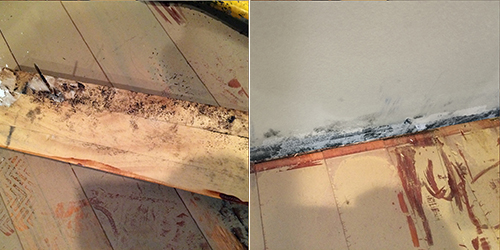What are your concepts about Looking for Signs of Water Damage in the Bathroom?

The shower room is exceptionally at risk for wet build-up as well as possible water damages due to the frequent use of water in it. This article provides basic evaluation methods to assist finding water damages hazards.
The frequent use of water in the restroom makes it incredibly prone for damp build-up as well as prospective water damages. By checking it consistently, you can lower water relevant damages.
The complying with set of evaluations is easy to perform and should be done once in every 3 months in order to maintain your washroom healthy and also to stop potential water damages caused by the bath tub, the shower, pipeline joints and also plumbing, sinks, cupboards, as well as the bathroom
Do not overlook performing these inspections and be detailed while executing them. Keep in mind that these simple examinations can conserve you a lot of money by providing very early signs for water damages
Bathtub and Shower
The shower and also tub need special attention and also upkeep. Check the tiles and also change if broken. Ensure that there is no missing cement between the floor tiles. Examine and change broken caulking at joints where the walls fulfill the flooring or the bath tub. Blocked drains and pipelines troubles will certainly avoid the bath tub from drying out and may show severe issues beneath the bath tub. Seek advice from an expert right away to prevent architectural damages. Pay attention to stainings or soft locations around the bathtub walls as they might suggest an internal leakage.
Plumbing
Signs for water damage are hard to identify because most pipelines are set up inside the wall surfaces.
Pay special focus to floor covering and wall surfaces wetness and also spots as they may show an undetectable plumbing problem. Examine moisture levels in adjacent spaces as well.
Sinks and also Cabinets
Sinks and also cupboards are exposed to wetness and moisture daily and also are typically forgotten. Inspect on a regular basis under the sink and on the kitchen counter above it. Fix any drip in the catch as it may recommend drain troubles. Take a look around the sink, sluggish draining pipes may suggest an obstructed drain. Change sink seals if they are broken or loose.
The Commode
The toilet is an at risk water junction. Examine the water lines and look for leakages around the bathroom seat, in the hose pipe, and also under the water tank. If you find any indications of dampness on the floor around the commode, check for leaks in the toilet edge and storage tank seals.
Realize that hanging commode bowl antiperspirants raises the chances for obstructions.
Water Damage Signs In The Bathroom To Avoid Cleanup
Musty smell
This is one of the easiest signs to catch because musty smells are so odorous. The damp, earthy, moldy smell should be a big red flag. The smell will develop when moisture gets trapped in surfaces, and begins to facilitate mold growth. Leaking pipes under cabinets, inside walls, and behind shower fixtures will cause moisture to stay trapped and not dry, which will lead to mold growth and spread. As soon as you notice any musty smells in your bathroom, have it checked for hidden water damage and cleanup signs.
Visible mold
If the smell isn’t there to give it away, sometimes you will actually see mold growth. Finding mold in your bathroom is a serious problem, because mold is very harmful to your health. By the time mold growth is visible, it also means that water damage has already occurred and been present for some time. The only way the mold problem can be resolved is to find the source of the moisture and get it stopped. To safely and adequately remove mold, you need to have professionals handle the remediation. Do not waste any time in getting mold problems addressed, fixed, and sanitized so that you can protect you and your family from the many respiratory symptoms caused by mold exposure.
Damaged floors
Bathroom floors should be able to withstand some exposure to water while still remaining in good condition. However, when excess exposure or water leaks occur, they will begin to damage even the most water-resistant flooring. If you notice any cracking, bubbling, staining, or warping on your bathroom floors, there is probably a water leak somewhere causing the distortion. If you notice areas of the floor have become softer, or even have a spongy feeling, there is probably damage to the subfloor. Subflooring is typically made up of plywood. When plywood is exposed to water or moisture, it will absorb it. Once it has become saturated, the weight of the excess water will cause the wood to swell and soften. Check the floors in your bathroom frequently to catch any of these sings before they lead to damaged subflooring.
Changes on walls
When water leaks behind walls, it will cause changes in the drywall. Peeling plaster, blistering paint, and soggy wallpaper are all good indicators that excess water is building up behind the wall. Water leaking behind drywall will cause it to swell and be soft to the tough. If you start to notice gaps along the trim of your walls, or where tile meets the wall, it could also be a strong indicator that there is a leak behind the wall. Any changes, distortion, or damage on the walls should be evaluated as soon as you notice it to prevent further water damage and cleanup.

I am very excited about How to Prevent Bathroom Water Damage and I hope you liked the post. Enjoyed our piece of writing? Please share it. Help somebody else locate it. Thanks a lot for taking the time to read it.
Visit Site